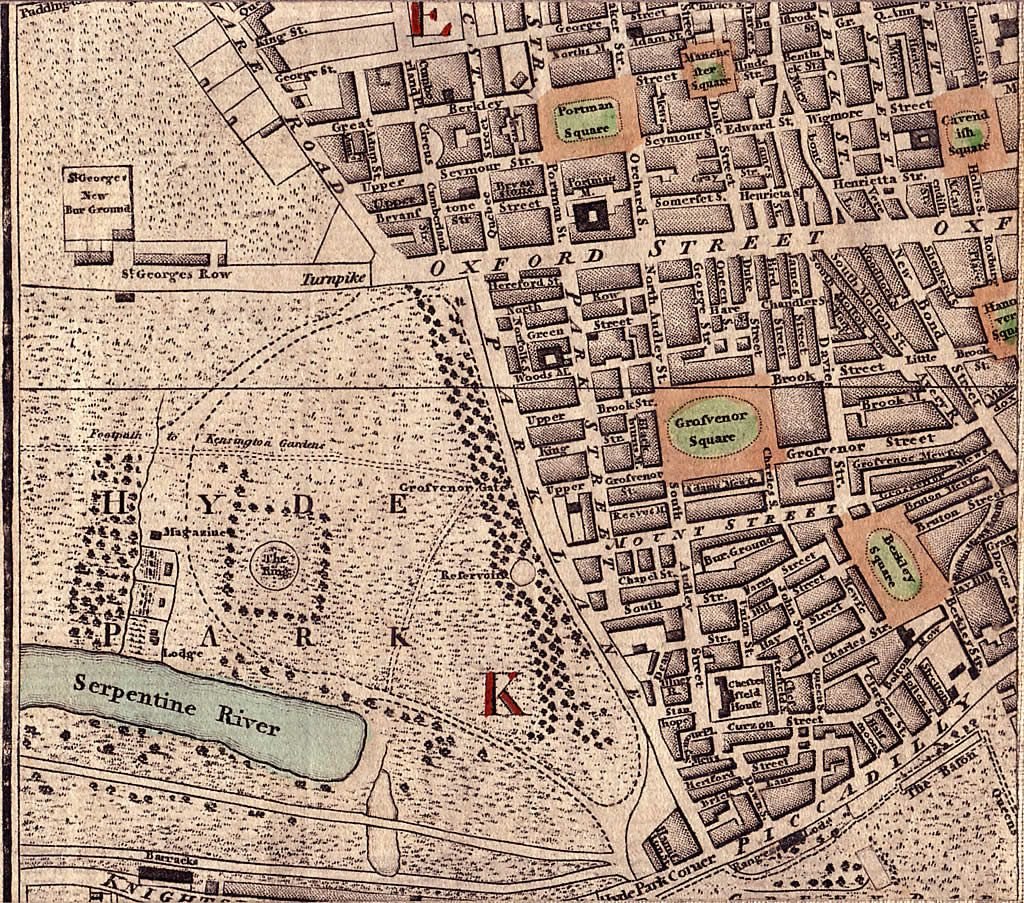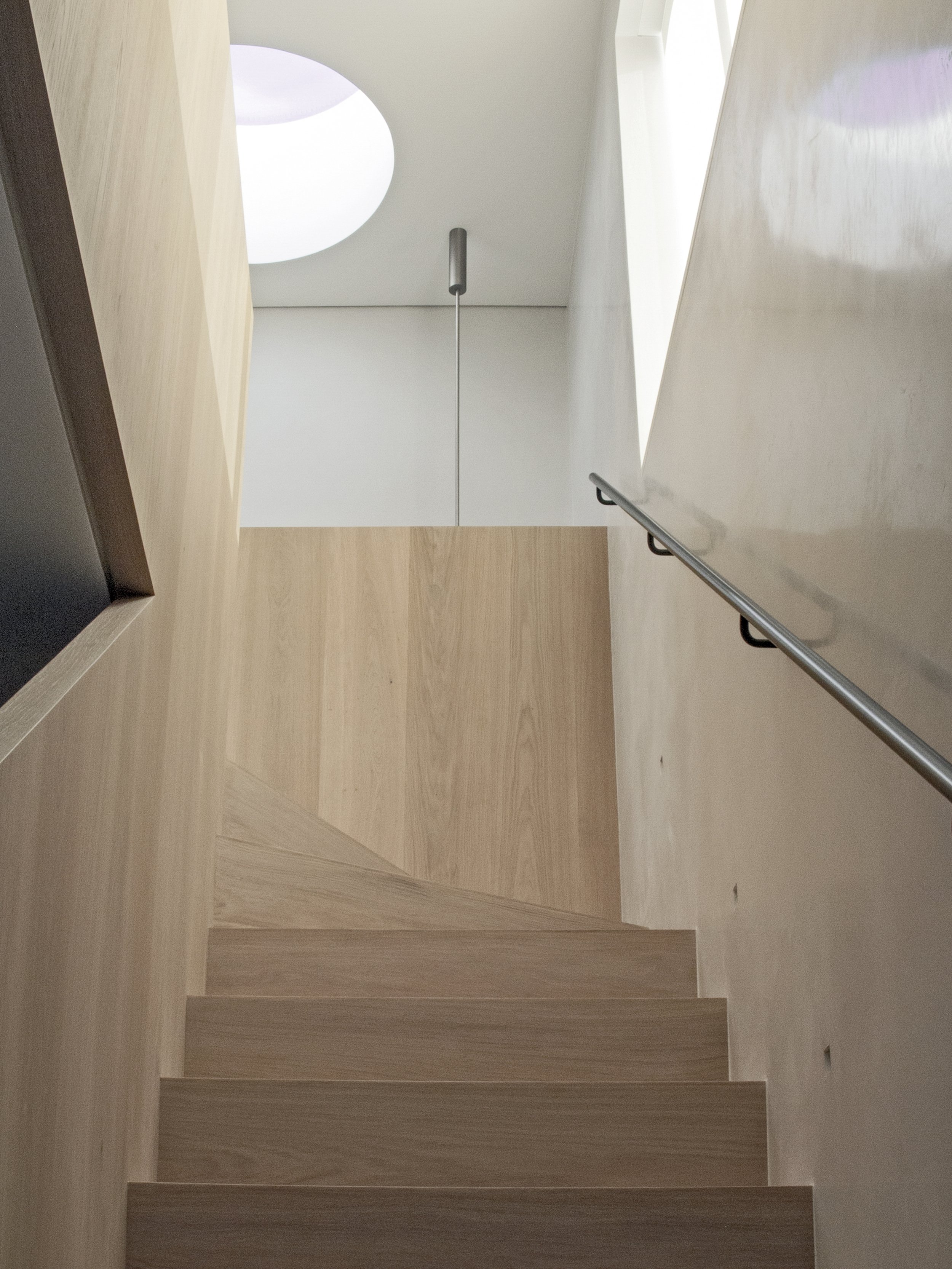MARKET MEWS - MAYFAIR, LONDON, UK
2019 - 2023
Market Mews is part of Mayfair Conservation Area and it derives its name from a market fair held in the month of May in fields around the site of today’s Shepherd Market. The area is dominated by fashionable townhouses (and their mews) reflecting the history of English domestic architecture from the early 18th to the early 20th century. The site lies on the south side of Market Mews, a cobbled through road between Hertford Street and Pitt’s Head Mews in Westminster.
The streetscape has predominantly two, three and four storeys, plain and painted brickwork buildings, many of them with garages at street level with a variety of mansard and parapet roof styles.
The existing building is a Post War Modernist Townhouse house with an integral garage. The main “street face” of the building is clearly expressed as a simple form, a narrow “mews” façade, articulated by the respectful treatment of both the new fenestrations and the consistent stepped rhythm of the facades along the south streetscape of Market Mews.
A new mansard roof is set back from the main parapet line on the Market Mews side, greatly reducing the perceived extent of the massing. To the rear, the top of the building extends to be in line with the façade of the adjoining Market Mews properties, forming a two storey brick wall. This mirrors the prevalent condition of the rear faces of Market Mews/Shepherd Street block, rationalising and tidying up the appearance of the rear side, improving the proportions of the building and constructing the current disarray.
All four elevations, including the flank walls, are carefully articulated to respond positively to the surrounding scale of all neighbouring buildings. The new building is intended to coexist without competing with the existing context.
The proposed building exterior forms part of an overall perspectival composition within the varied streetscape of Market Mews. The proposed materials and colour have been selected to provide a robust but sympathetic addition to the overall visual composition and unity of the mews. The proposed elevation is in principle a single colour tone and constructed from a limited palette of material suitable for its urban setting.
A new pale coloured and lightly textured facing brick is proposed to this mews elevation. Lime mortar will be used for the brick joints along with a lime slurry coat applied to the exposed face of the brickwork. This provides a visually unifying and protective finish. It imbues the brickwork with a crisp and fresh appearance with a more contemporary feel than most fair faced brickwork.
This proposed primary material approach will be complemented by a limited number of secondary materials facilitating a finer articulation of the façade. The ground floor will be finished with a smooth-textured, light-coloured, concrete to provide a visually distinct ‘base’ to the building. This material approach will also be used for the window cills, planters and copings. White window frames are proposed, reflecting the predominance of this window frame colour for the residential buildings in the area.
The materials were chosen with a strong emphasis on solidity and quality of surface finish. This is essentially a contemporary proposal, relying on the careful detailing and fundamental integrity of the proposed materials.
Market Mews pertenece a un área de conservación historica de Mayfair. Su nombre proviene de una feria de mercado, que se llevaba a cabo en el mes de mayo, en los campos alrededor del sitio del actual Shepherd Market. El área está dominada por casas adosadas dentro de estrechos pasajes, que reflejan la historia de la arquitectura doméstica inglesa desde principios del siglo XVIII hasta principios del siglo XX. El sitio se encuentra en el lado sur de Market Mews, un pasaje adoquinado entre Hertford Street y Pitt’s Head Mews en Westminster.
El paisaje urbano tiene predominantemente dos, tres y cuatro pisos, edificios de ladrillos planos y pintados, muchos de ellos con garajes al nivel de la calle con una variedad de estilos de techo mansarda y parapeto.
El edificio existente es una casa adosada modernista post guerra con un garaje integral. La "cara principal" del edificio se expresa claramente como una forma simple, una fachada estrecha "mews", articulada por el tratamiento respetuoso de las nuevas aperturas y el ritmo constante escalonado de las fachadas a lo largo del paisaje urbano sur de Market Mews.
Un nuevo techo mansarda, retraído de la línea del parapeto principal en el lado de Market Mews, fragmenta la masa del edificio, reduciendo en gran medida la escala urbana percibida. En la parte trasera, la parte superior del edificio se extiende para estar en línea con la fachada de las propiedades contiguas de Market Mews, formando una pared de ladrillos de dos pisos. Esto, refleja la condición prevaleciente de las caras traseras del bloque Market Mews / Shepherd Street, racionalizando y arreglando la apariencia de la parte trasera, mejorando las proporciones del edificio y construyendo el desorden actual.
Las cuatro elevaciones, incluidas las paredes laterales, están cuidadosamente articuladas para responder positivamente a la escala circundante de todos los edificios vecinos. El nuevo edificio está destinado a convivir sin competir con el contexto existente.
El exterior del edificio propuesto forma parte de una composición general dentro del variado paisaje urbano de Market Mews. Los materiales y el color propuestos se han seleccionado para proporcionar una adición robusta pero comprensiva a la composición visual general y la unidad del pasaje. La elevación propuesta es en principio un tono de un solo color y construida a partir de una paleta limitada de material adecuado para su entorno urbano.
Para la elevación de Market Mews, se propone un nuevo ladrillo a la vista de color pálido y textura ligera Se utilizará mortero de cal para las juntas de los ladrillos junto con una capa de lechada aplicada a la cara expuesta del ladrillo. Esto proporcionará un acabado protector y unificador.
El enfoque dado al material primario, se complementará con un número limitado de materiales secundarios que facilitarán una articulación más fina de la fachada. La planta baja se terminará con un concreto de color claro y textura suave, para proporcionar una "base" visualmente distinta al edificio. Este enfoque del material, también se utilizará para los antepechos de las ventanas, jardineras y remates. Se proponen marcos metalicos blancos paera las ventanas, reflejando el predominio de este color de ventanas en los edificios residenciales de la zona. Los materiales fueron elegidos con un fuerte énfasis en la solidez y la calidad del acabado superficial. Esta es esencialmente una propuesta contemporánea, que se basa en los detalles finos y en la integridad fundamental de los materiales propuestos.
















